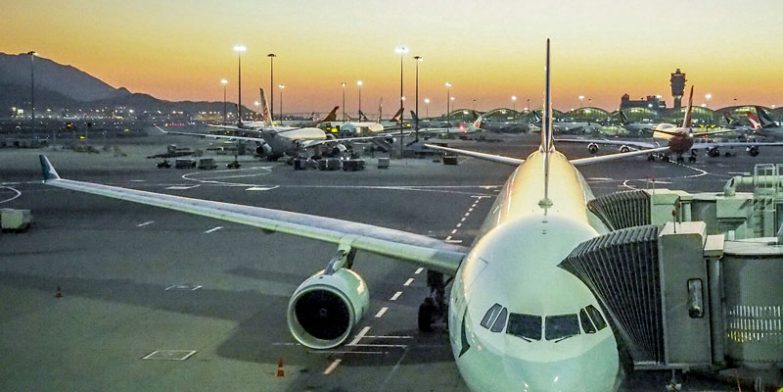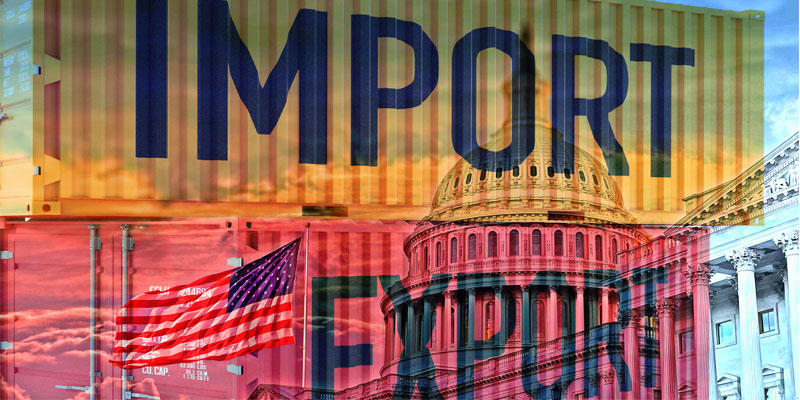
Iran’s seizure of the 15,000 teu MSC Aries in international waters off the Gulf of Oman means the ‘maritime danger zone’ has expanded significantly from the Red Sea and the ramifications could be massive, possibly providing a catalyst for freight rates to rise in the short-term.
Global air cargo demand remained solid in March, however, rates are soft in certain regions compared to last year’s levels, while Middle East and South Asia have seen significant increases.
Ocean
While the US indicated they might consider revoking the terrorist designation on the Houthis if attacks on vessels are halted, the Yemeni group resumed attacks and claimed to have targeted warships and commercial vessels in the Arabian Sea
With the Red Sea already being avoided fears are growing that after Iran’s illegal vessel seizures the Strait of Hormuz may be next and any closure would make Kuwait, Iraq and most of the UAE’s ports inaccessible.
On the US East Coast, alternative ports continue to handle the traffic rerouting away from the Port of Baltimore without congestion or increases in freight rates, while Army engineers expecting to clear a channel by the end of April to support a container-on-barge service, with the shipping channel expected to be cleared by the end of May.
During the period immediately following Chinese New Year (CNY), the container shipping lines implemented their traditional blank-sailing programmes to remove excess capacity from their Westbound and Trans-Pacific routes, by 35% and 25% respectively.
However, in the second half of March the carriers broke from tradition and fully optimised their fleet deployments to accommodate any surge in pre-festival cargo demand associated with festivals in Asia including Ching Ming, EID, Songkran, and Thingyan.
Global ocean freight demand has grown 4% YoY since 2022 and the lines clearly believe that volumes will rebound to Europe, while projections for US imports are very promising, with H1 volumes expected to be 11% higher than 2019 and 2023, and additional growth in the peak months of July and August.
Air
Global air cargo performance remained solid in March, with volumes quickly returning to typical levels after a strong pre-Chinese New Year surge, with Asia-Europe air and sea/air hubs recording strong demand.
Demand for sea/air services has seen Dubai-Europe tonnages triple compared to last year, leading to a huge 40% increase in average rates.
The post-Chinese New Year lull in airfreight is not hitting as expected this year, with the global air cargo market experiencing rising rates, particularly from the Asia Pacific, Middle East and South Asia.
The Middle East and South Asia to US lanes were up 51% year on year, while spot rates from Europe to US were less impacted by the Red Sea, increasing marginally month on month.
China to Europe spot rates increased 5% over the previous year, while growing eCommerce demand and delayed recovery of belly capacity contributed to a 15% average jump in spot freight rates year on year for the China to US market.
Road
Rising overall costs, including wages, tolls, vehicle maintenance, insurance and fuel, along with the economic downturn are the most significant challenges facing the road freight sector.
With transport prices still soft carriers are seeing reduced profits, which means less motivation for carriers to expand their operation and could lead to potential capacity challenges, when the market rebounds.
Transport prices are expected to keep rising, or at least to remain high, despite diesel prices returning to moderate levels, with increasing energy and insurance costs, as well as the cost of labour and other additional costs, continuing to drive up freight rates.
The latest data from the TEG Road Transport Price Index reveals that haulage and courier prices have increased in March, following consecutive months of soft spot rates.
Whatever challenges your supply chain may face, our commercial vehicle fleet and the price and capacity agreements we have in place with our long-term partner air and ocean carriers mean that we continue to deliver resilient and reliable supply chain solutions.
Our purchase order management and supply chain tracking technology support the most demanding global trading regimes, providing transparency and control.
EMAIL Andy Costara to learn more and see how our technology can support your supply chain.





